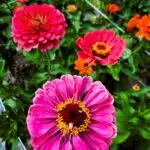
When it comes to flowers in the vegetable garden, marigolds, nasturtiums and calendula are the first blossoms that pop into my mind. I can see them vividly, swaying in the breeze, bejeweled with yellow-orange petals, being visited by a great variety of beneficial insects.
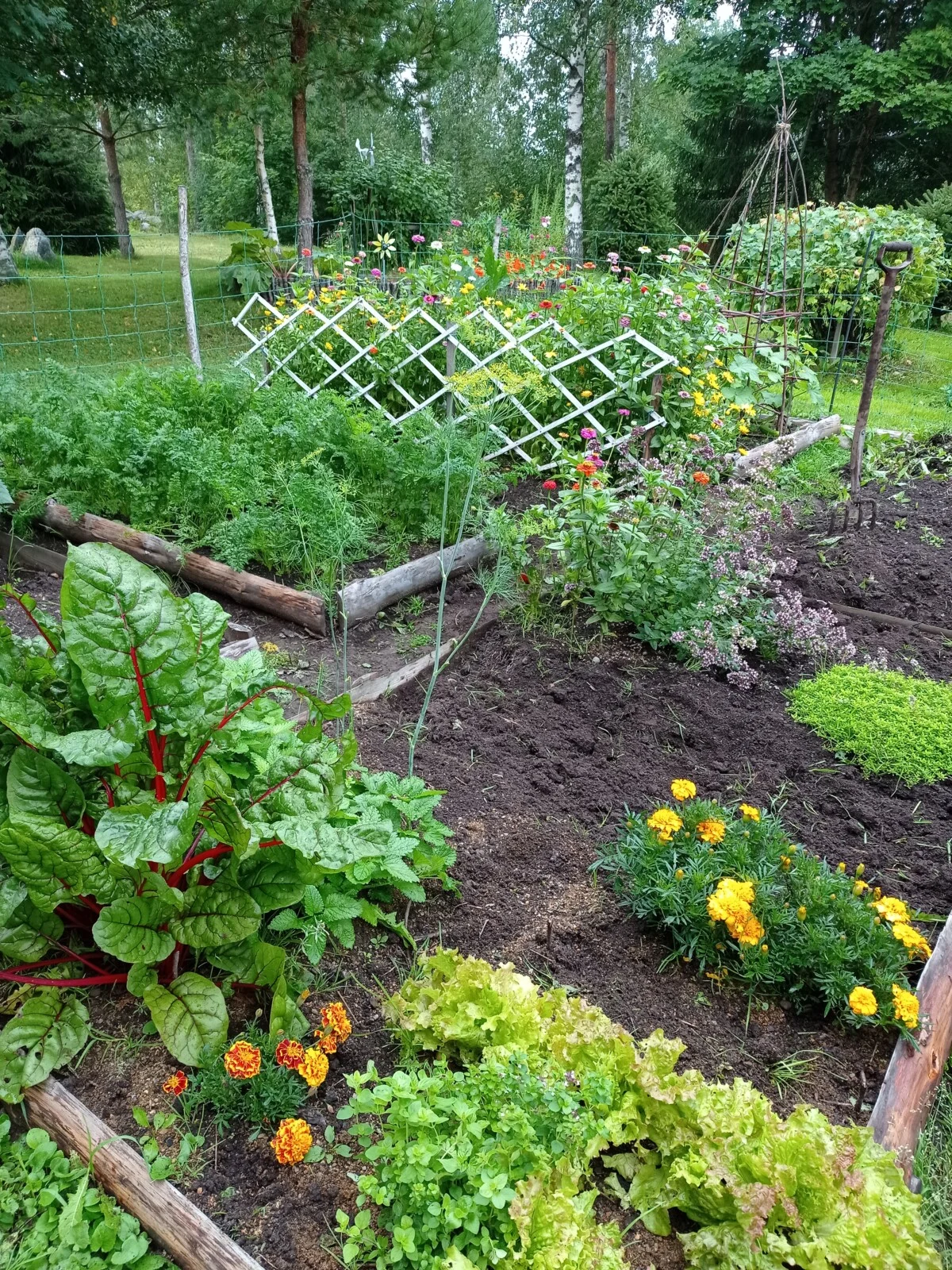
Almost idyllic, isn’t it?
But wait. Something is missing. Where are all the eye-catching colors normally found in a flower garden? It seems they are still in the flower garden.
So, for the sake of beauty, among other things, let’s bring them on over to the vegetable patch. Trust me, the zinnias will fit right in with the other flowers growing in your vegetable garden. The more the merrier!
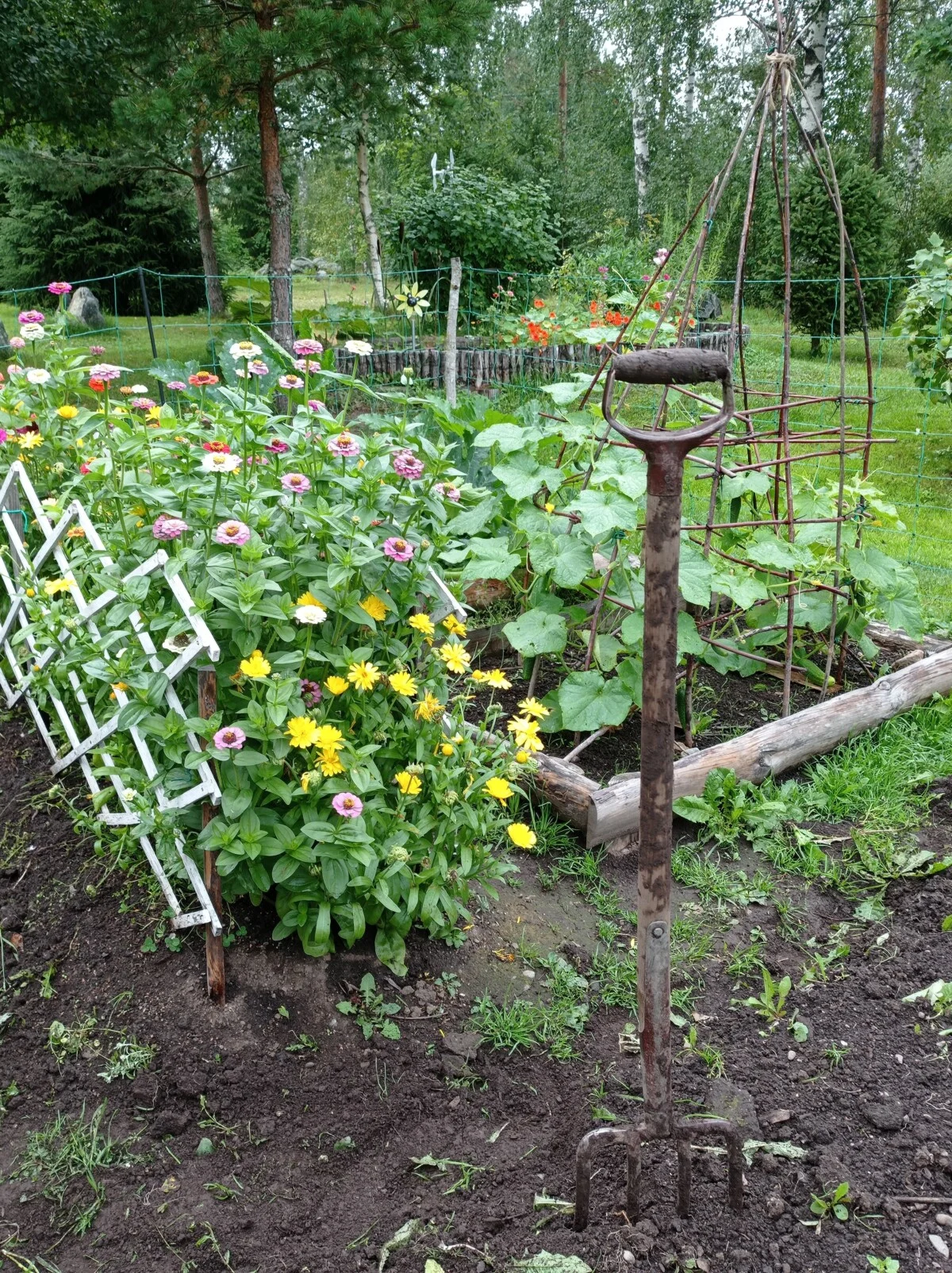
Zinnia Basics
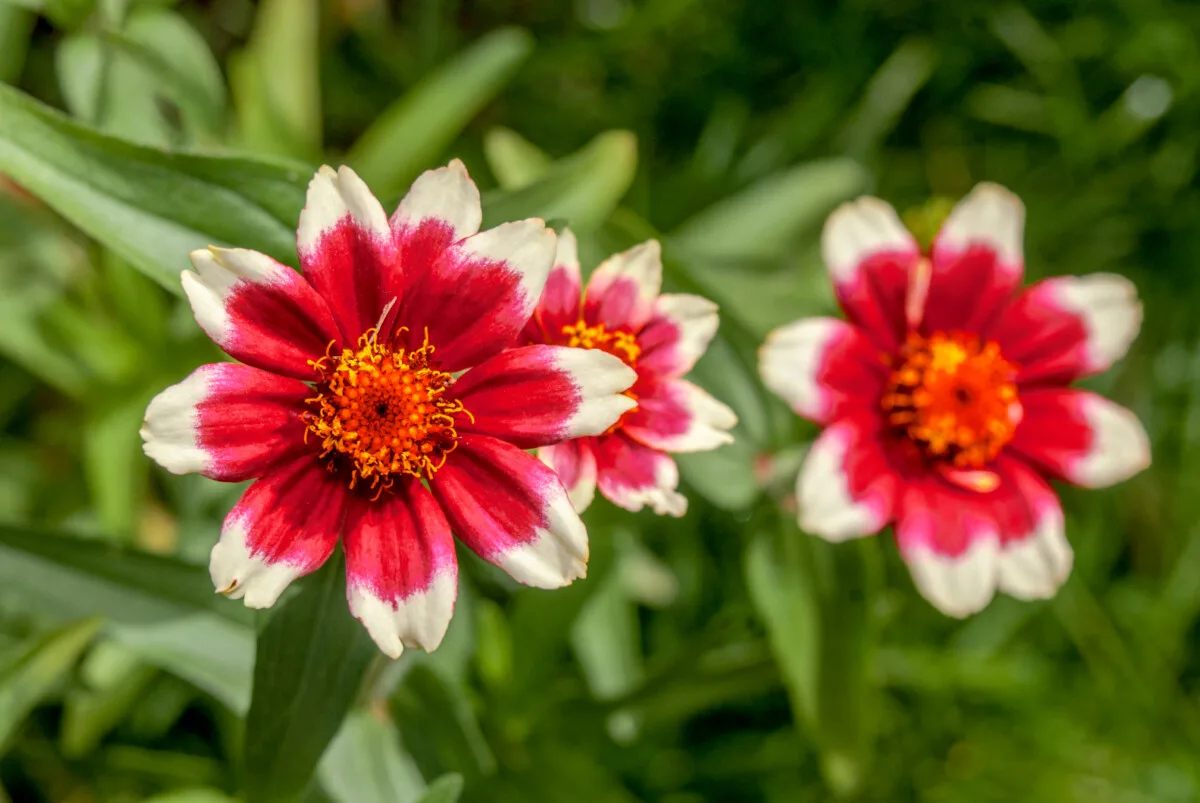
What you really need to know first and foremost about zinnias, which are native to Mexico, is that they are a low-maintenance plant. I’ll give it two thumbs up on that account. Low maintenance is always a plus. After all, I am a no-dig gardener. Not lazy, just wise enough to know what works well with our garden soil.
Zinnias are also drought tolerant. So, if your garden tends to suffer a little in the summer sun, you might want to add them to your growing list of drought-tolerant plants.
Being an annual, zinnias are quick to grow from seed to blossom. Many varieties are ready to be enjoyed in as little as 65 days.
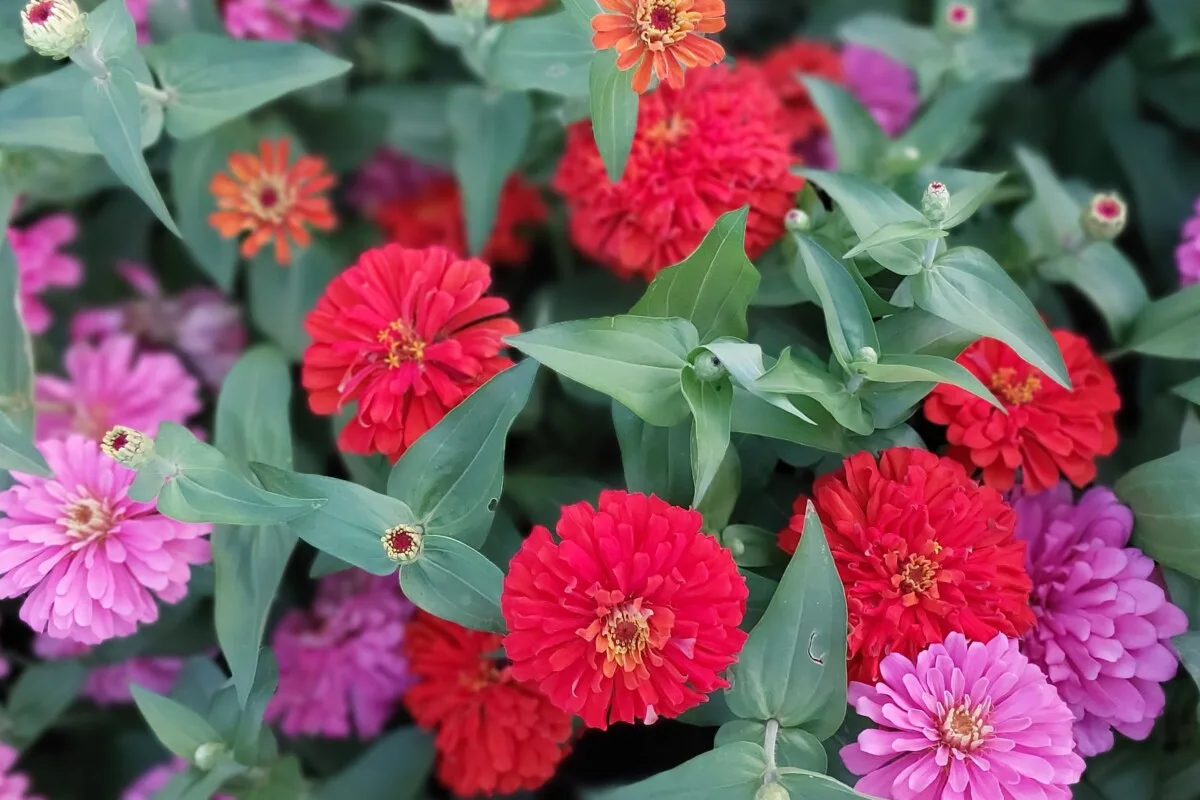
A Note on Zinnia Varieties
Zinnia elegans is the classic, tall-growing variety that often features at the back of the flower garden. In other words, it is a border plant. It may or may not be the best choice for your vegetable garden, however.
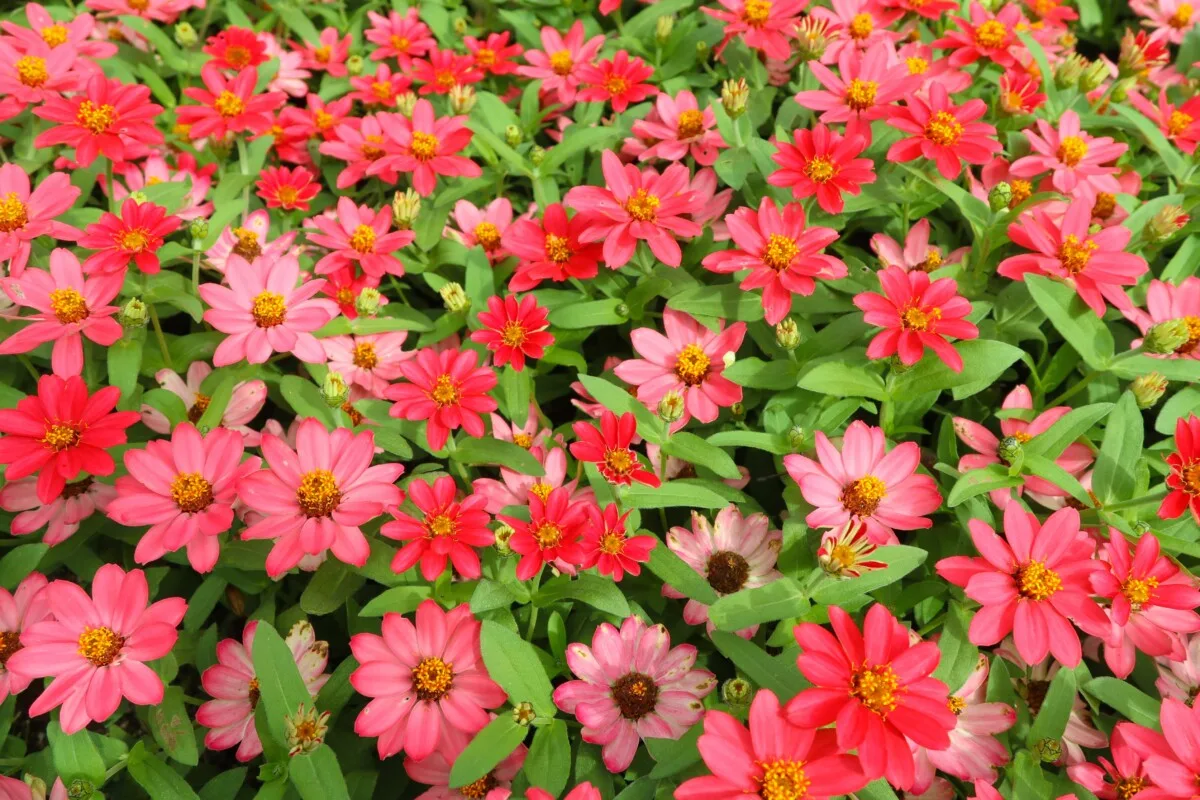
Zinnia angustifolia belongs to a low-growing set of zinnias that will shine at the front of a border, along a sidewalk or garden path. They most certainly flourish and show off at the edge of your garden. Because of their reduced height, this class of zinnias is perfect for raised beds, containers and pots.
While out searching for zinnias, you may also find Zinnia haageana and Zinnia marylandica popping up from time to time.
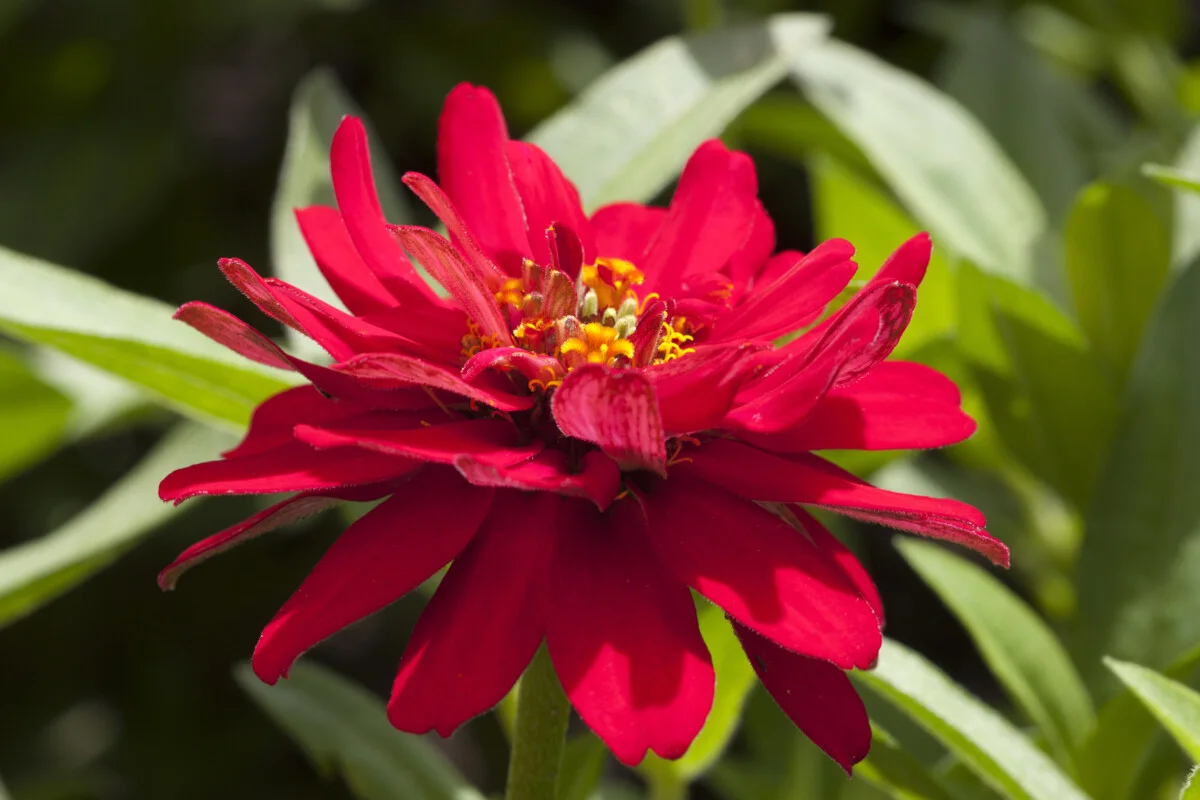
These species are more compact with smaller blooms – rest assured, the colors are still bright and amazing. And they’ll still get the job done as far as attracting pollinators or acting as a trap crop. As a bonus, smaller blooms make beautiful small bouquets.
Choosing which zinnias to plant is all a matter of color and height. Naturally, how much garden space you can afford to give up to the flowers as well.
If you were ever concerned that zinnias wouldn’t fit into your garden space, now you know they will. You’ll always find a corner, or border, to tuck them into.
6 Reasons to Grow Zinnias in Your Vegetable or Flower Garden
The reasons for planting zinnias in either garden are the same: attract beneficial pollinators, bring beauty to your garden and yard, and of course, for armfuls of cut flowers.
1. Zinnias attract pollinators.
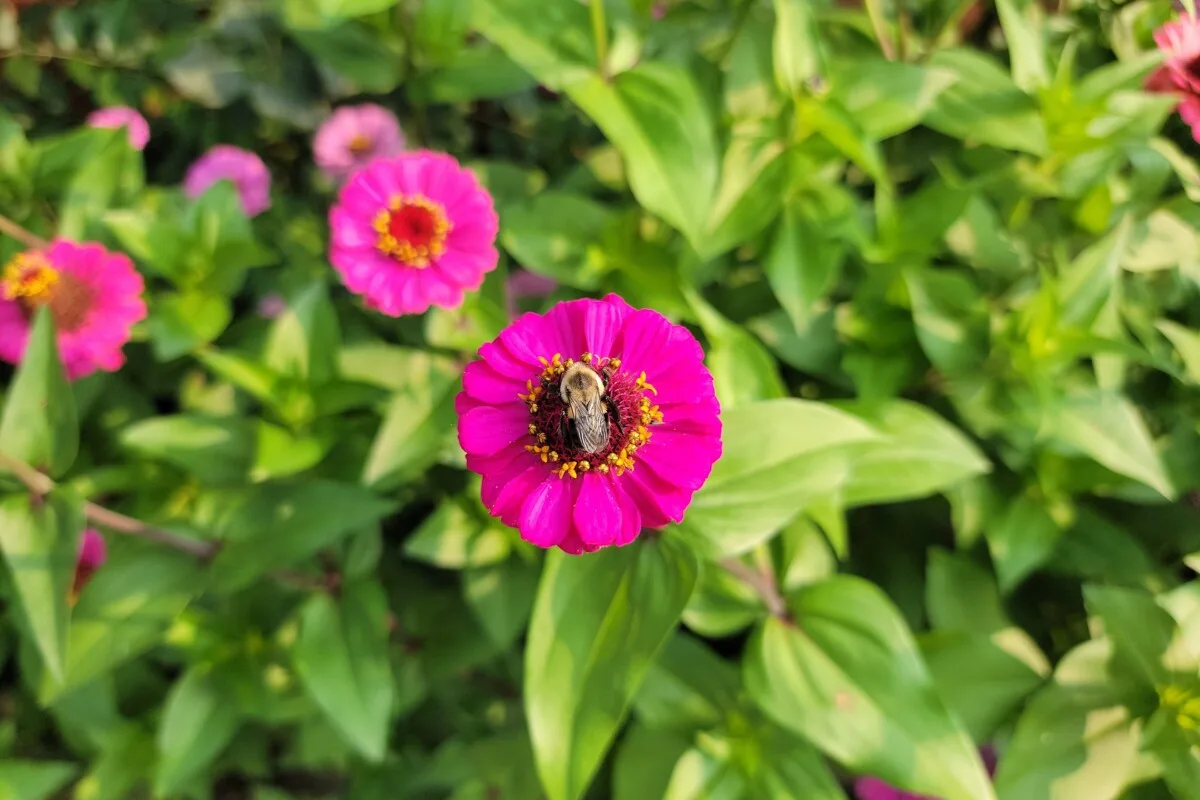
Being an organic gardener is one thing that brings me a lot of joy. It benefits the landscape way before it benefits me and my family. But before we can harvest the flowers, the insects have first dibs.
There are loads of plants that attract bees, butterflies and other distinguished insects, and while zinnia often doesn’t make the list, it’s still a great contender.
For example, ladybugs are mesmerized (or at least that’s the way I like to think of it) by the bright colors of the zinnia blossoms. They keep aphid and mite levels down.
Predatory wasps are also attracted to zinnias because of all the nectar, which in turn helps to control cabbage worms, tomato hornworms and aphids.
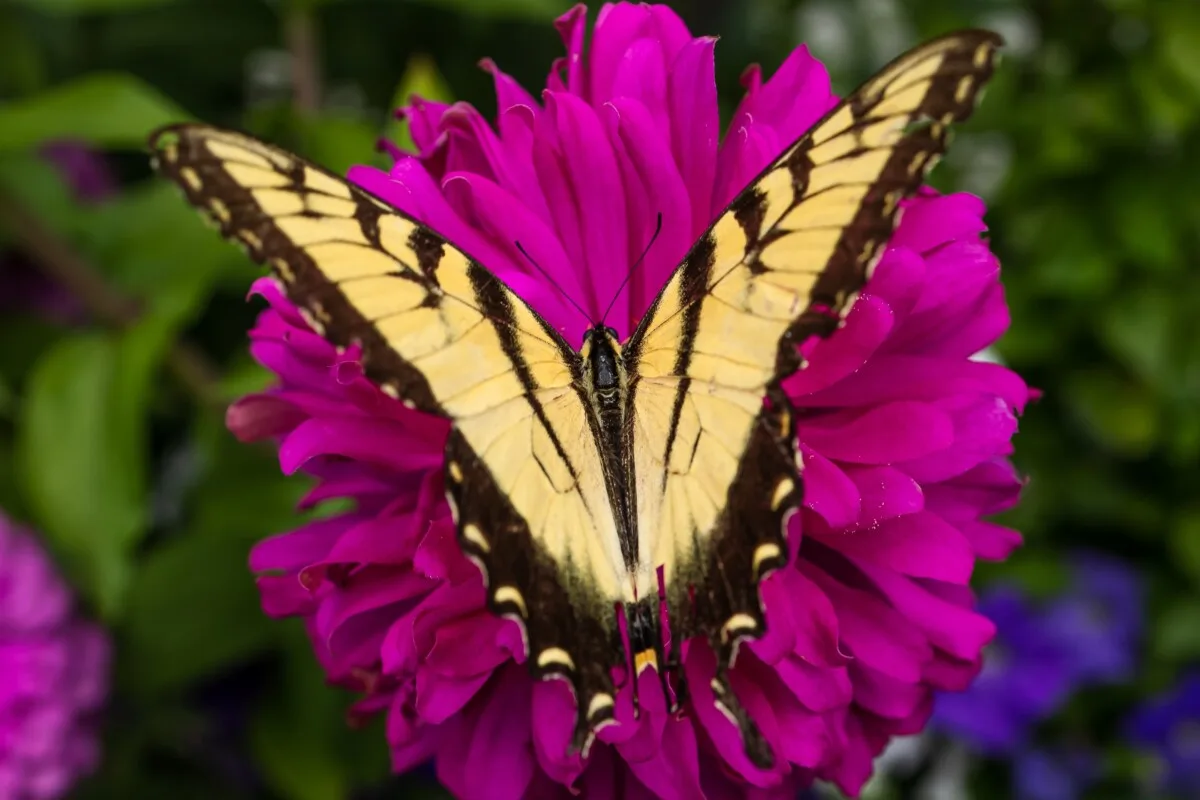
Did I mention that zinnias are butterfly magnets? It’s one of the plants you should be growing that’s not a butterfly bush, that is, if you have a love for butterflies.
2. Zinnias are easy to grow.
Flowers often show their fussy side when you are trying to germinate the seeds. With zinnias, this just isn’t the case. I’ve known gardeners to prepare the soil and toss the small, pointy seeds directly on the ground with favorable results. Within days, you’ll have seedlings. Within weeks, vases upon vases of flowers.
Direct sowing is one method of planting, starting them indoors 4 weeks before frost is another. If you are growing a certain color and amount of zinnias for a wedding or other occasion, it may be worthwhile to note how many days until harvest, then subtract from there to find your ideal planting time. I’d go over and beyond this to include a couple of weeks on either side of the event just to be sure you have enough flowers to harvest at once.
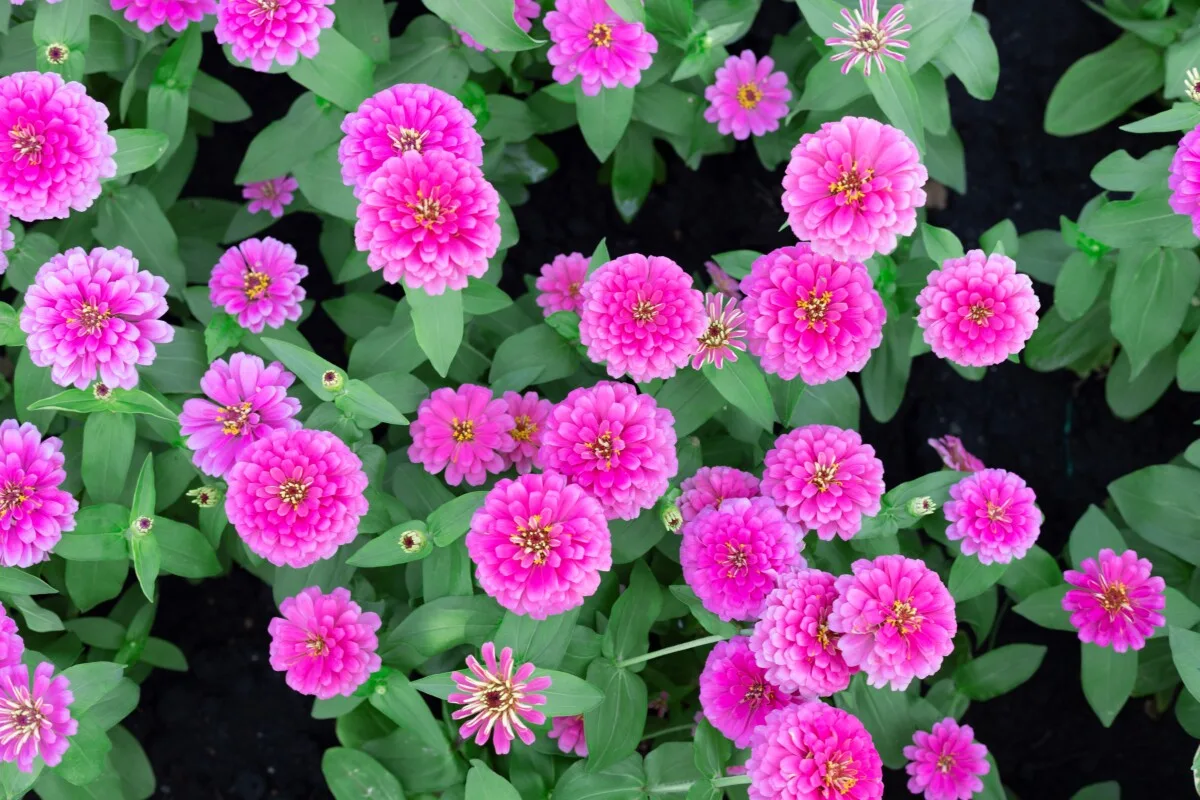
When to plant Zinnias?
If you are direct sowing seeds, late spring, after all danger of frost has passed is the time to do it.
Zinnias are one of those plants, like root vegetables that don’t appreciate being transplanted. But if you must, you must, and try you will. Because what doesn’t work for some works for others. Lydia has shared her seed starting experiences (lessons learned the hard way), which will offer some advice on the subject.
I mentioned that zinnias are low-maintenance. If that didn’t catch your attention yet, here are a couple more things to consider. It’s enough to prepare the soil well and fertilize not more than once a month with a general fertilizer, they won’t even need mulch. Save the mulch for the vegetables. The only maintenance they need is deadheading, which is a pleasurable activity if I do say so myself.
3. Available in many colors, zinnias have the ability to light up your garden.
Zinnias have to be one of the prettiest annuals. I’m not playing favorites here, but they will be going in our gardens this year, yes, both of them. In with the veg, and among the other cut flowers.
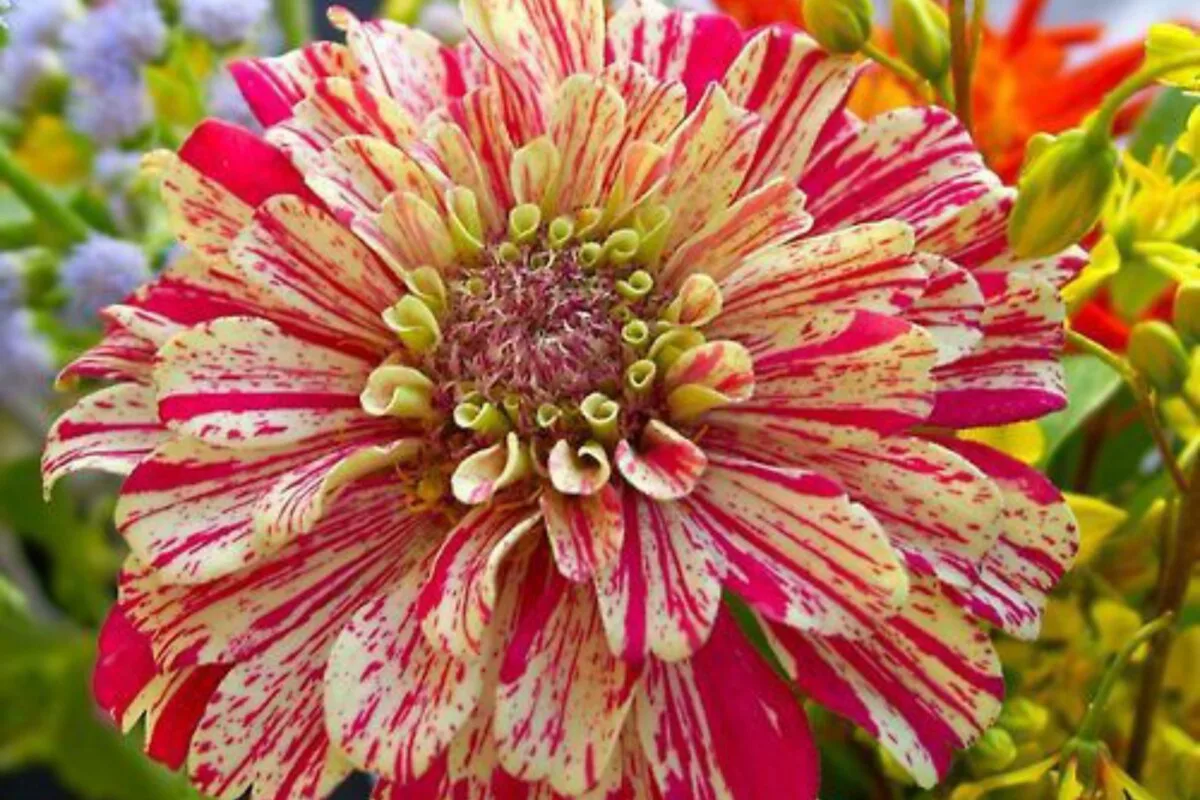
And if I’m the one to dish out advice, I’m going to give it a go as well. Last season, although our garden was green, it certainly wasn’t shades of pink, purple, red, or white like bright zinnias can be. Naturally, there were some tiny pops of color from the long-blooming calendula (mostly used for herbal teas in our household), and the squashes eventually came into their own shades of orange and yellow, but for the most part, green stole the show.
Have you seen Purple Giant zinnias?
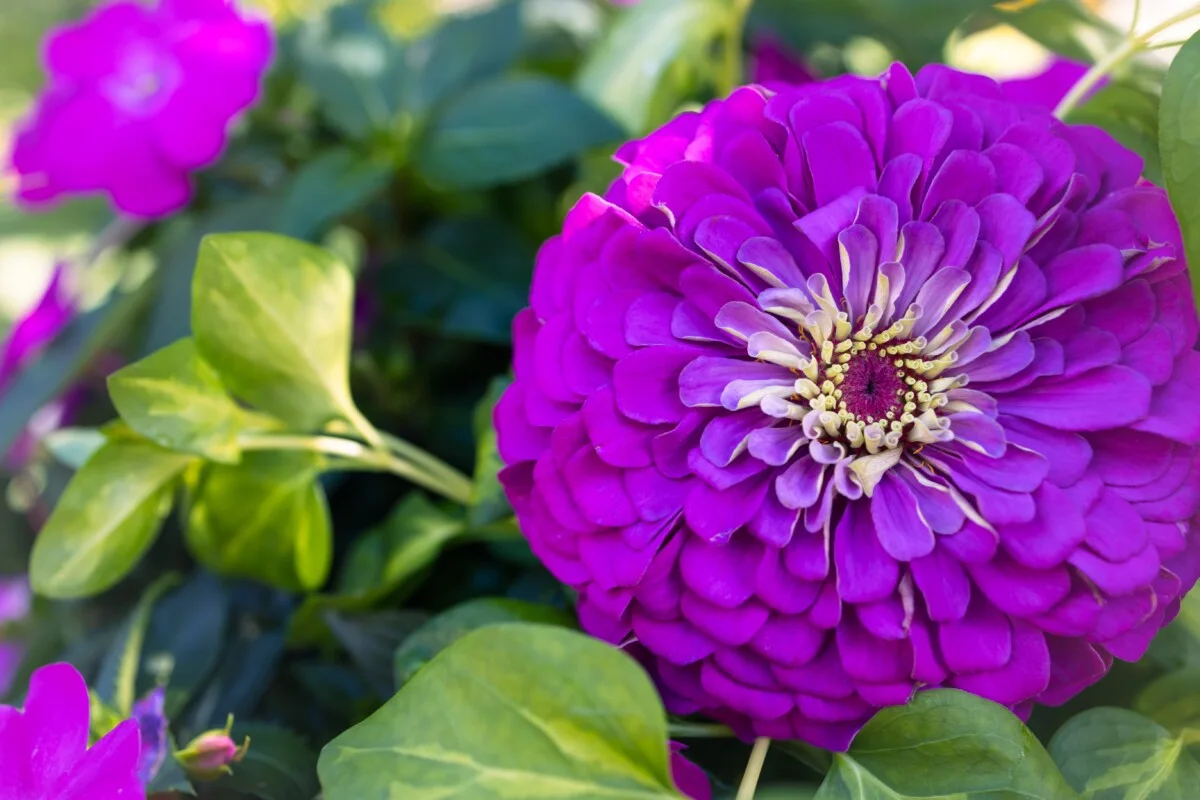
If you aren’t really familiar yet with what sort of zinnias are out on the market, you’re in for a really colorful treat.
Check out these organic purple giant zinnias. When they are 4+ feet tall and blooming massively in your garden, you can give a silent thanks for this article.
Have you seen Giant Red zinnias? or Double Zahara Cherry? or Cactus Flowered Zinnias with quilled petals?
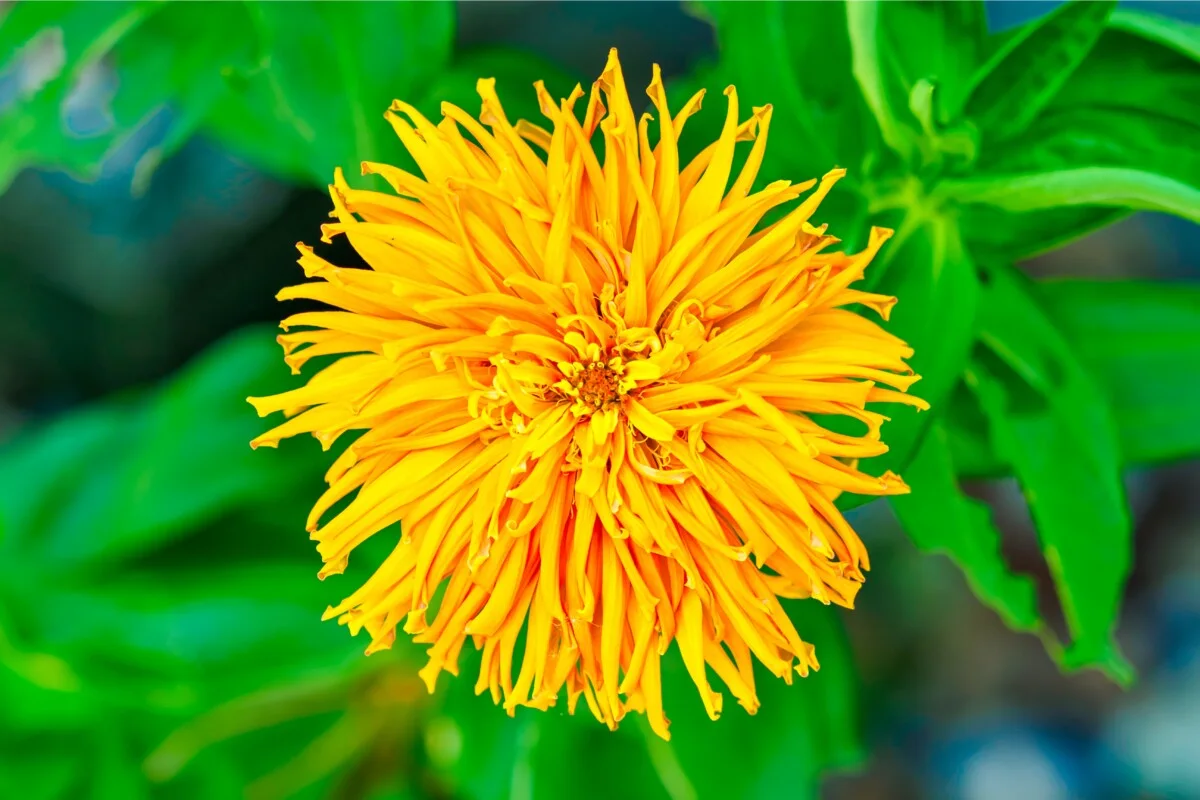
When I say there are many to choose from, I mean just that: there are many varieties of zinnia to choose from. So, you shouldn’t choose just one. You should plant several kinds of all colors and sizes.
For the sake of information already at your fingertips, here are 21 varieties of zinnias for you to ponder over.
4. Zinnias can be used as a sacrificial trap crop.
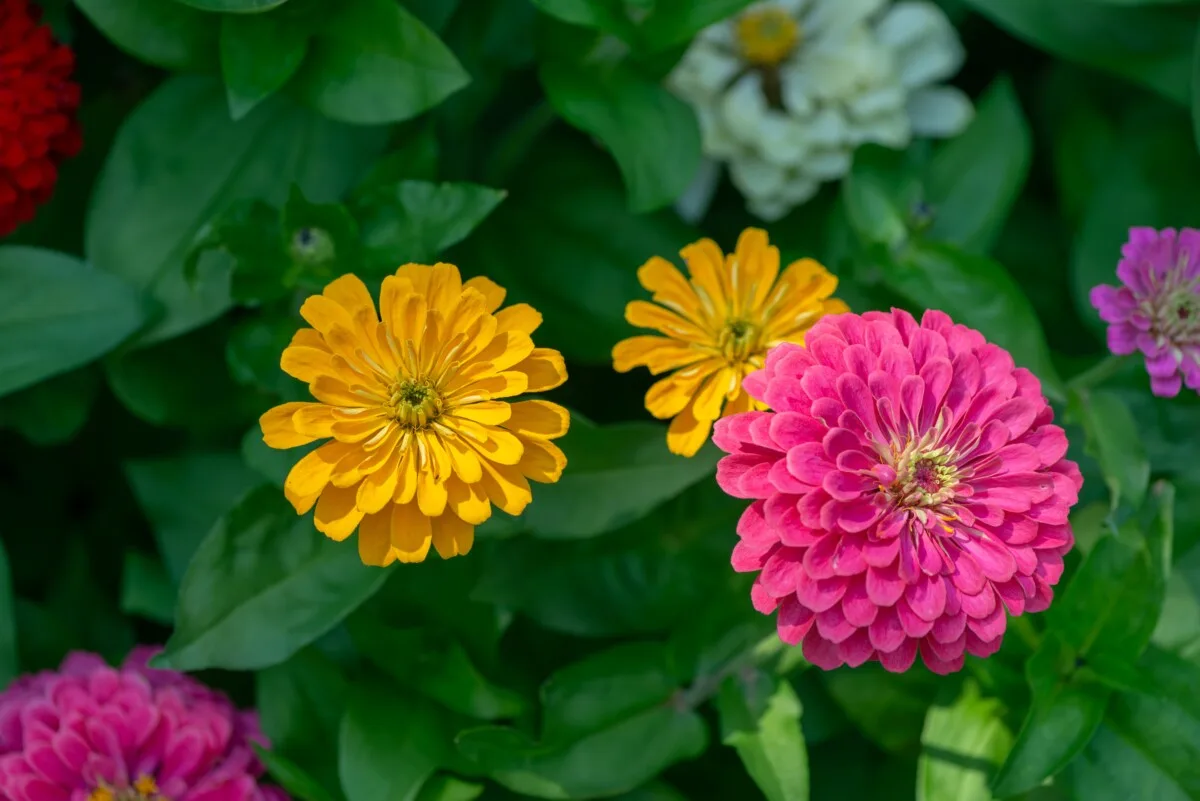
Trap crops are an often overlooked aspect of gardening. Who wants to let one crop go to waste just so others will thrive? Me!
I know it’s not your typical answer, but hear me out. Sometimes trap crops are necessary to save your entire garden from pests.
Zinnias, for instance, attract many insects you don’t necessarily want in your garden, such as aphids, thrips, spider mites and caterpillars. Yet, they’ll likely want the zinnias more than your tomatoes or your beans. When zinnias are planted at the edge of the garden, they’ll take some attention off your future food. Not that there isn’t enough to go around.
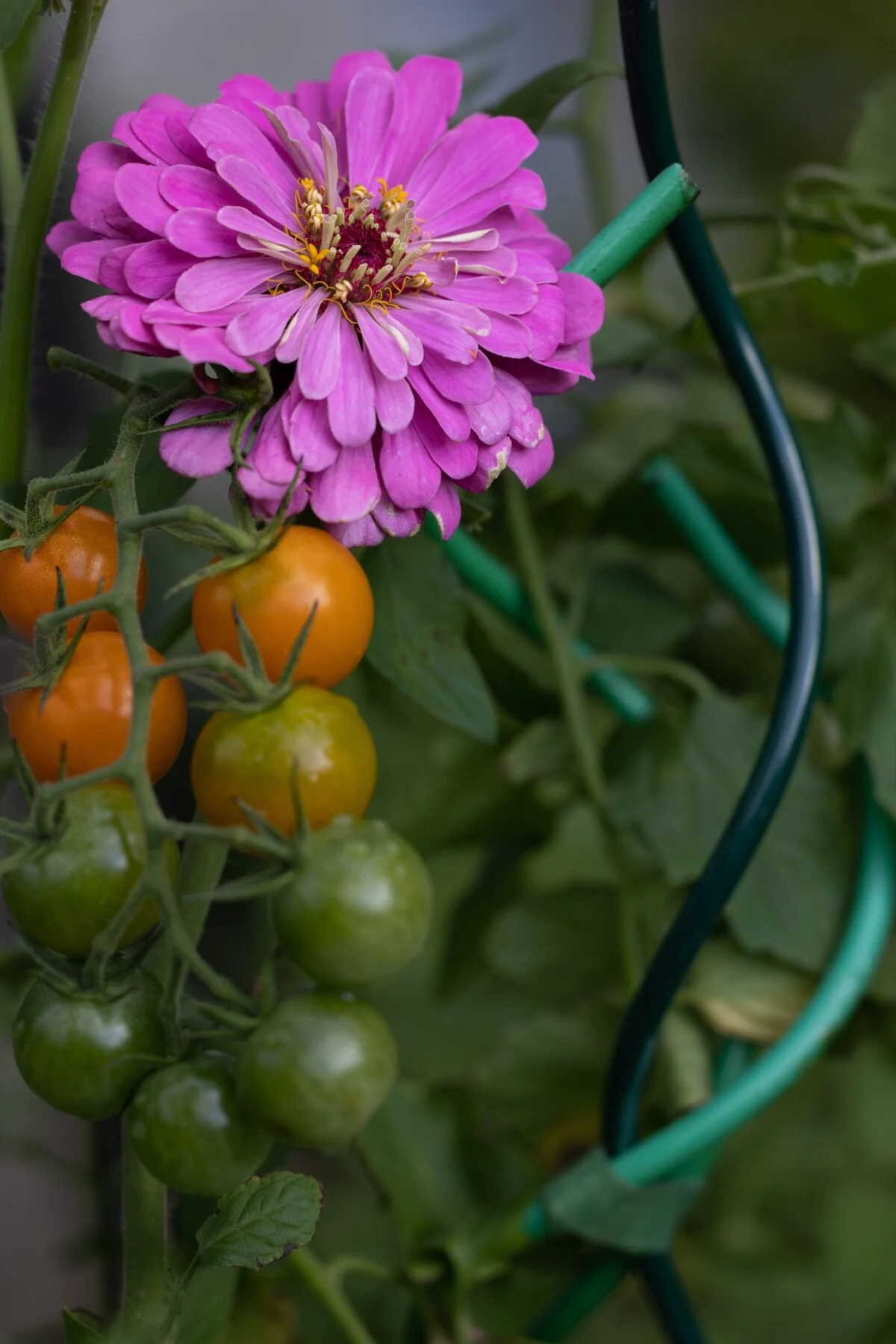
It’s a different way of gardening that requires a different mindset. It may or may not be for you, but the next benefit is for everybody.
5. Blossoms, blossoms, blossoms.
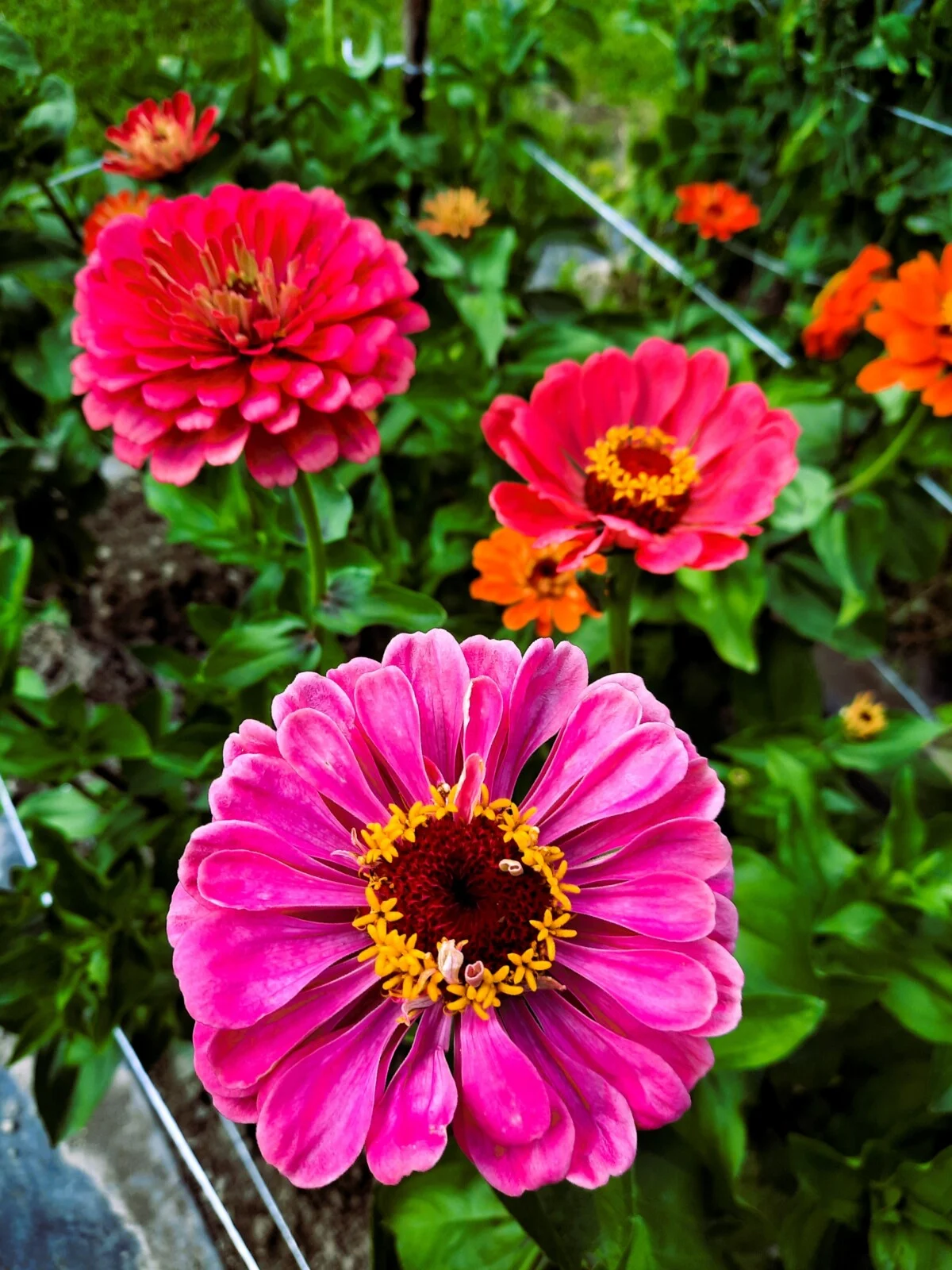
Zinnias are prolific bloomers.
They will bloom all summer and into the fall until the frost reaches out to bite them.
The key to keeping them blooming is to regularly deadhead them, for a single plant can produce multiple blooms at the same time. As a cut-and-come-again plant, the more attention you give it, the more it will gift you with flowers ready for cutting.
Which brings us back once again to the flower (or vegetable) garden.
Zinnias make gorgeous cut flowers.
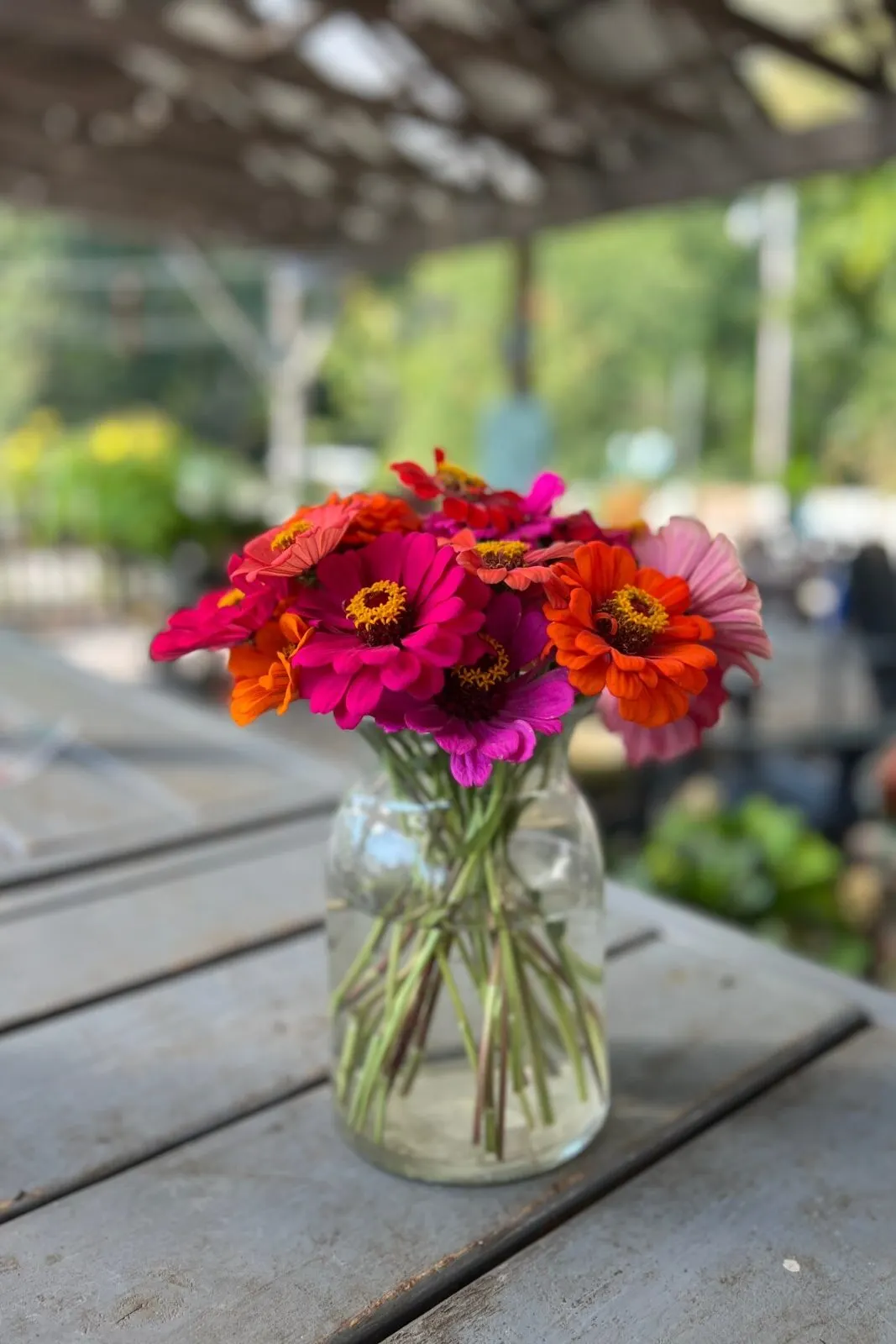
Fresh zinnias have a vase-life of 7-10 days. You can push that up to two weeks if they aren’t in direct sunlight.
To ascertain that they are ready to cut, be sure to perform a simple shake/wiggle test. Hold the stem about 2-3″ below the bloom and gently shake it from side to side. If it wiggles it’s not ready to cut, the stem is still immature.
If it stays straight and stiff between your fingers, it’s time to stick those beauties in a vase and now enjoy them indoors.
6. For your convenience, zinnias are self-seeding.
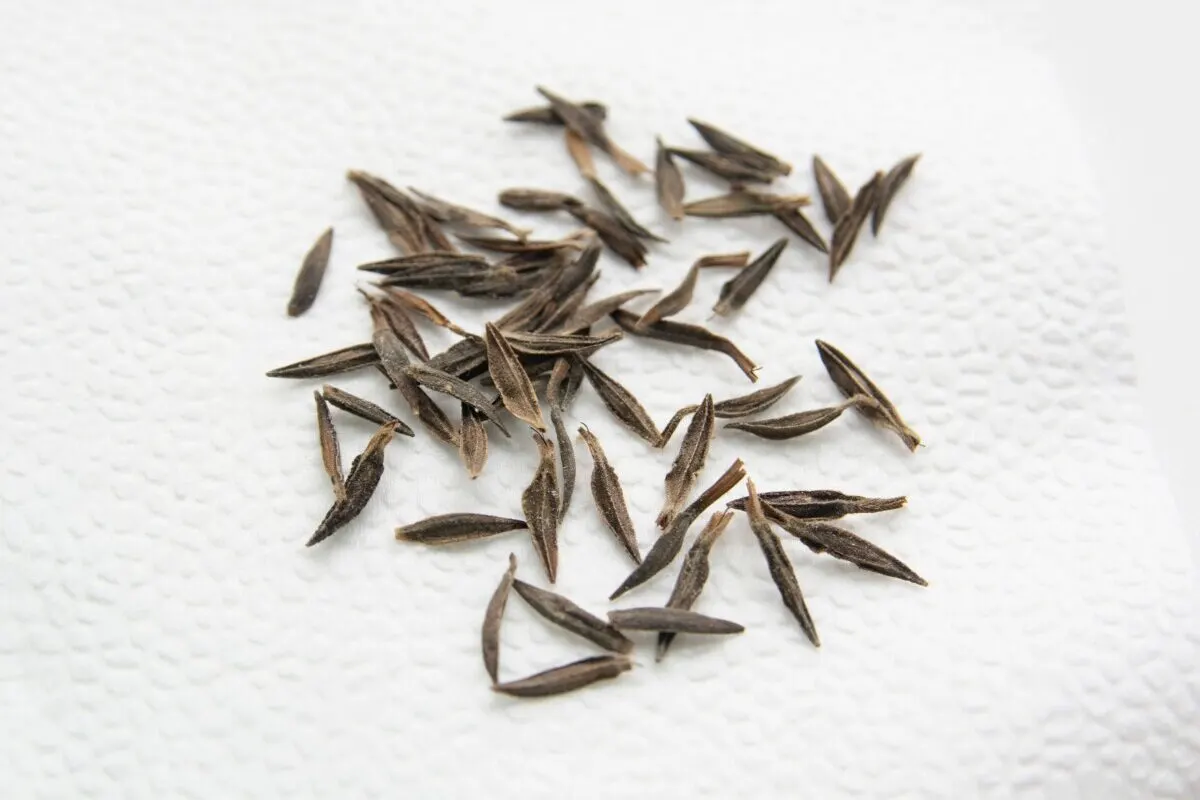
Naturally, you can easily save seeds from your zinnias. Once the flowers have fully dried on the stem, go ahead and collect the seedheads in a bowl. Dry them out a day or two more, then lightly twist the seeds out with your hands. Store them in labeled envelopes, being sure to keep the colors separate.
If that’s too much work, or you simply miss your window of opportunity for harvesting seeds, you can simply let the seeds fall to the ground at their own will. Unless the birds or small mammals take every seed away, the seeds will germinate the following year with no effort on your part.
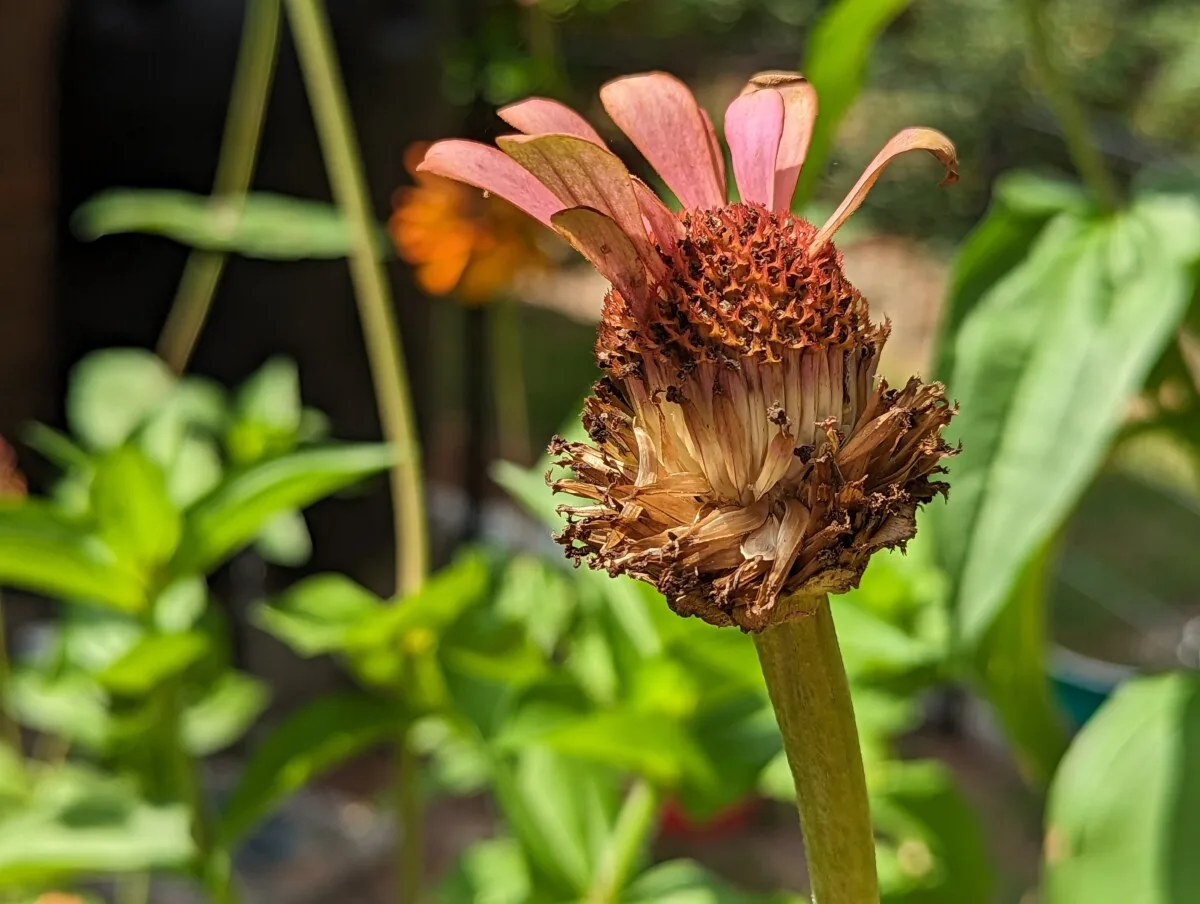
Letting seeds fall to the ground is a bit of a gamble, but the resulting surprise color next year is always worth it. In our vegetable garden, we always find new plants in new places every year and ask ourselves – how did they get there?
Nature is a great decorator if you let her be.
With all these zinnia-tastic benefits, it’s no wonder they work equally well in a vegetable or flower garden.
So, where will they be this season – among the wildflowers or taking center stage with a lineup of beans?

Get the famous Rural Sprout newsletter delivered to your inbox.
Including Sunday ramblings from our editor, Tracey, as well as “What’s Up Wednesday” our roundup of what’s in season and new article updates and alerts.


